Satellites
Satellites are objects which orbit a larger body in space.
Our Moon is a natural satellite of Earth.

Communications satellite: ESA
Humans have launched many artificial satellites into orbit around Earth.
In this blog, we’ll concentrate on these artificial spacecraft.
Uses of Satellites
Satellites contribute greatly to modern life.
Currently there are around 5,000 active satellites in orbit round Earth.
From watching TV to driving cars, we take satellite technology almost for granted.

NOAA weather satellite: NASA
Here are some uses of satellites with an example of each:
Communication, Television: Intelsat
Navigation: GPS, Global Positioning Satellites
Weather Forecasting: Meteosat
Earth Observation / Remote Sensing: Radarsat
Search & Rescue: Sarsat
Military: Big Bird
Astronomy: Hubble Space Telescope
Launch
Satellites are launched using a variety of rockets.
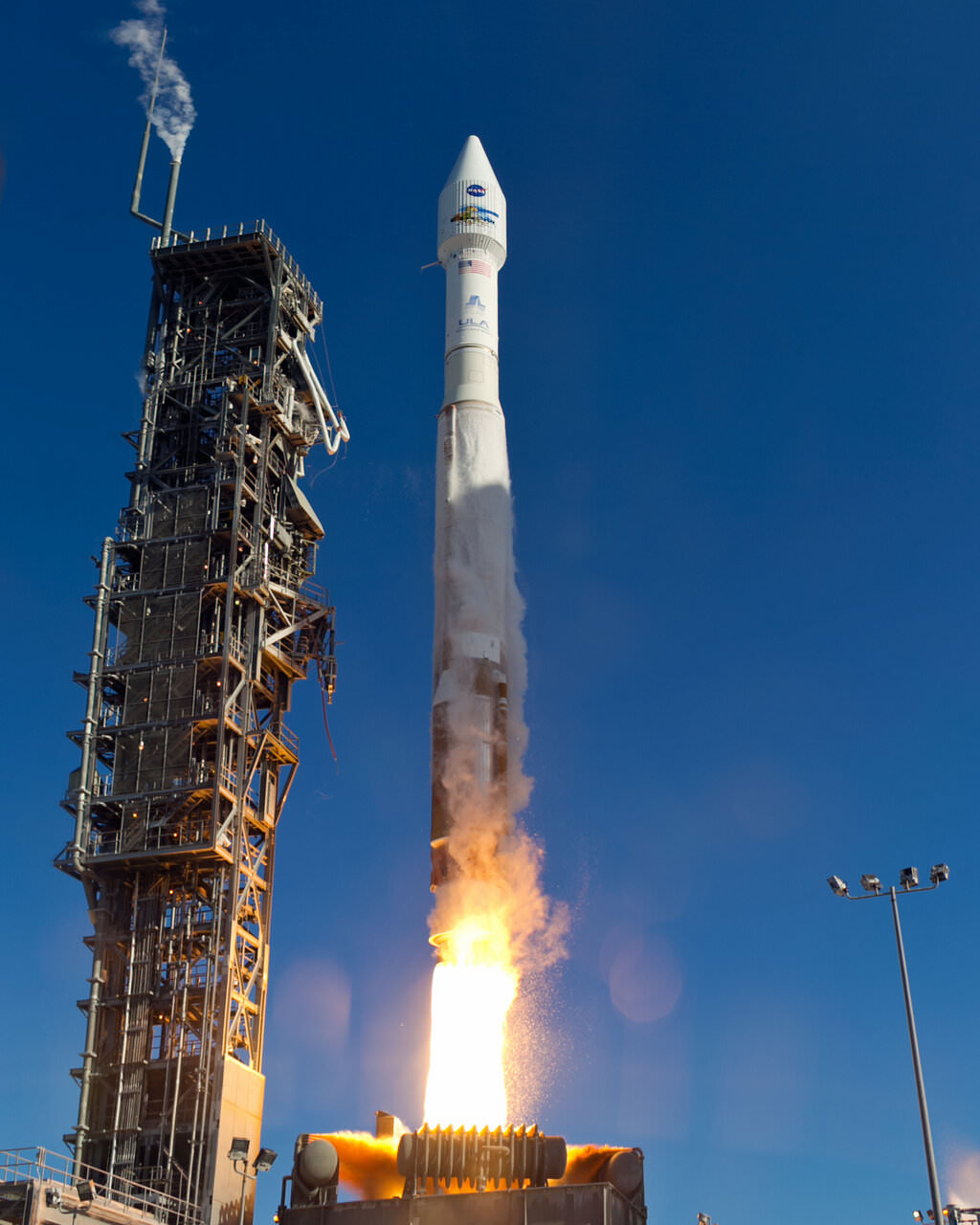
Landsat launch: NASA
A satellite must reach a speed of 27,400 km/hour to go into orbit around the Earth.
Orbits
There are several types of orbit for satellites.
They are defined by their height above the Earth.
The type of orbit chosen depends on the what the satellite is used for.
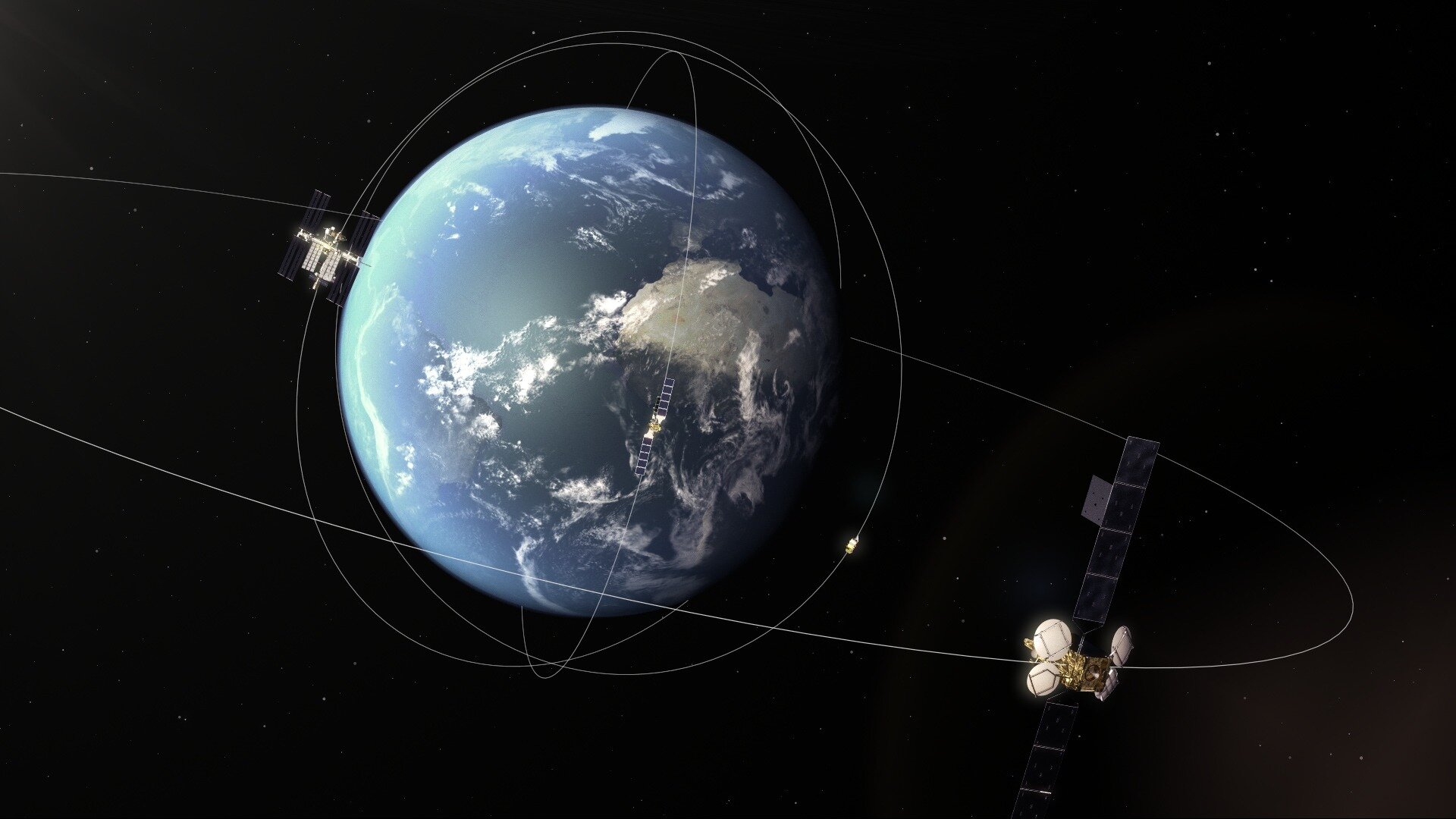
Satellite orbits: ESA
Low Earth Orbit, LEO
These satellites orbit between 200km and 2,000 km above Earth.
Most satellites use Low Earth Orbit.
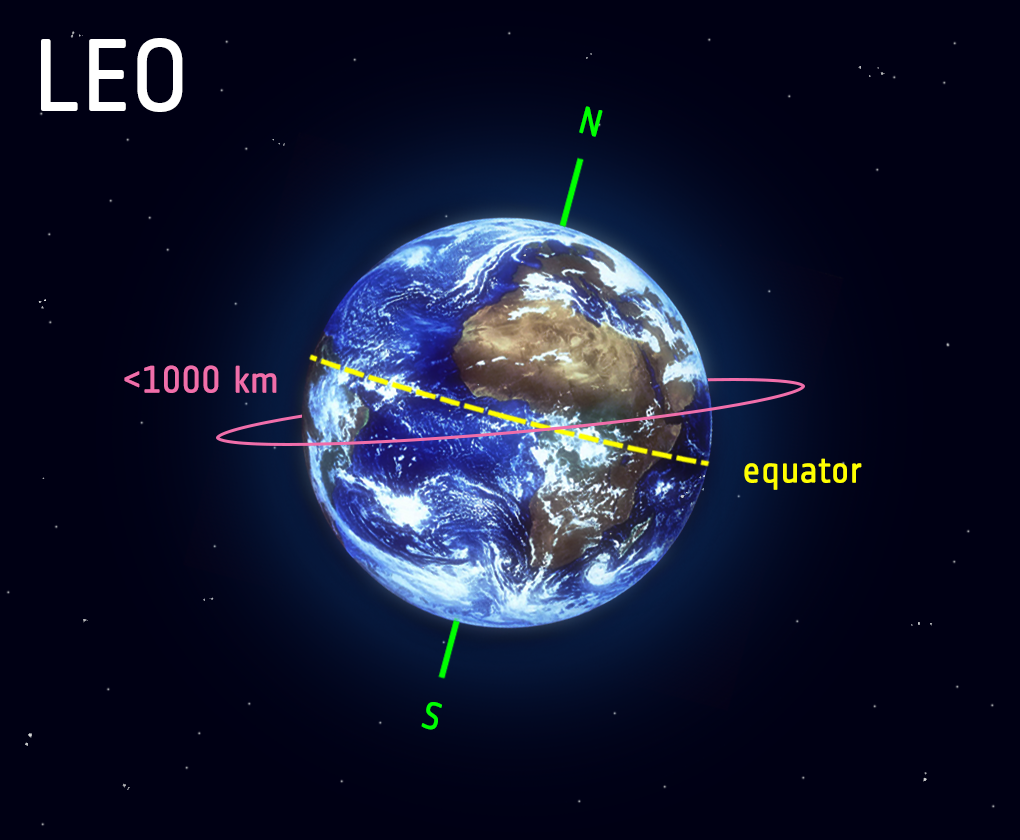
Low Earth Orbit, LEO: ESA
Earth Observation craft can photograph Earth’s surface from close in.

Weather satellite: NOAA
Examples also include the Hubble Space Telescope at 500km and the International Space Station at 400km.
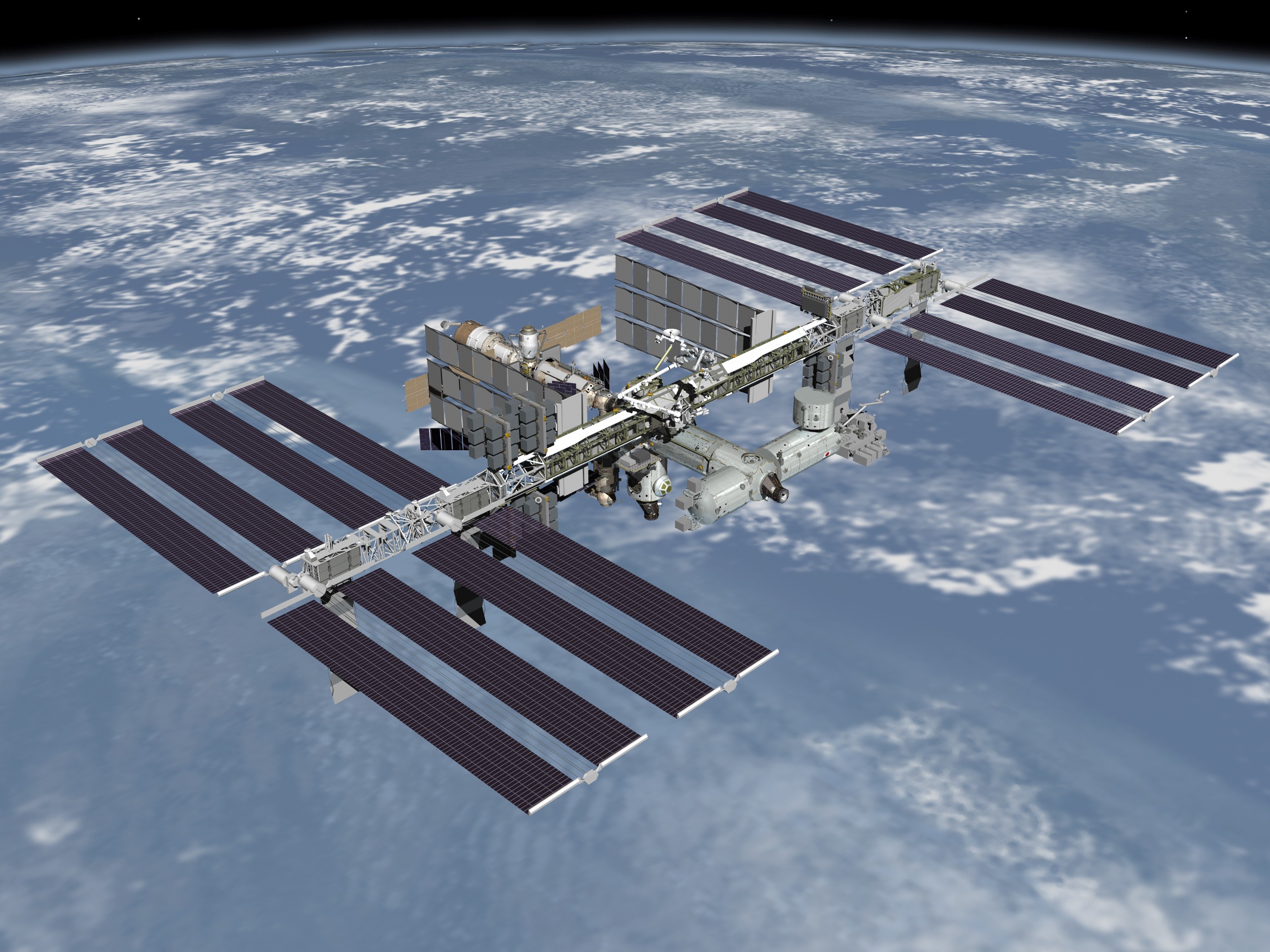
International Space Station: NASA
Medium Earth Orbit, MEO
A few satellites go around Earth at altitudes between 2,000 km and 35,000 km.
Medium Earth Orbit includes GPS and some communications craft.
Geostationary Orbit
These satellites orbit at 35,800 km above the Earth.
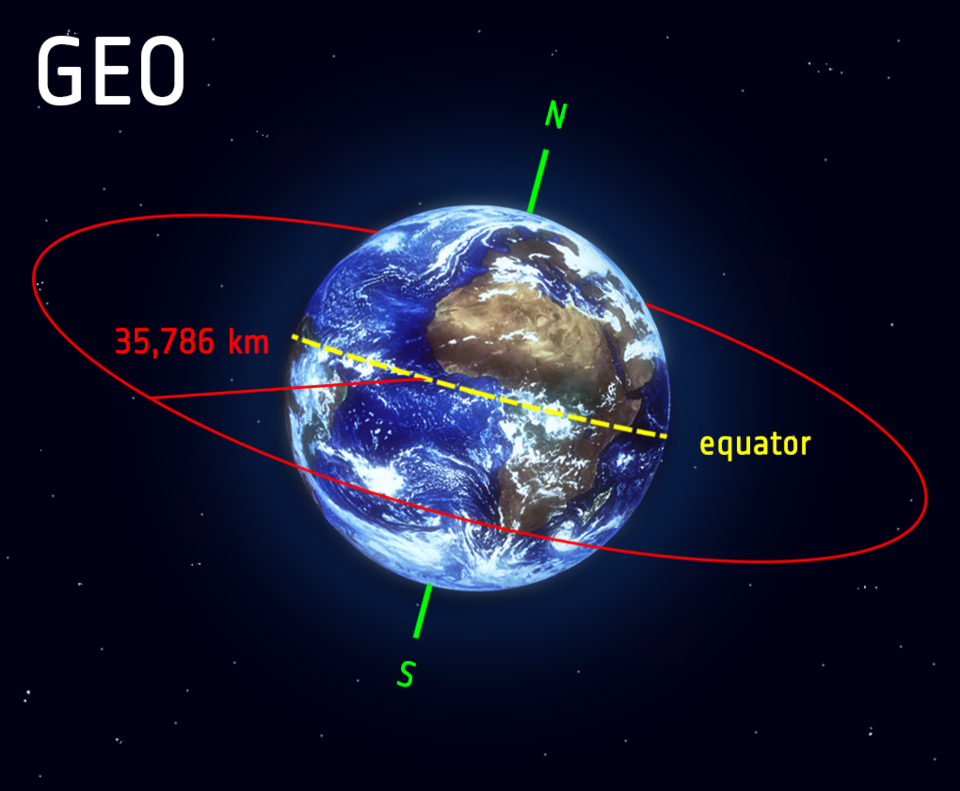
Geostationary Orbit: ESA
They orbit our planet in the same time as it takes Earth to spin once – 23 hours, 56 minutes, 4 seconds.
At this speed they remain exactly above the same place on Earth.
The best examples are television satellites.
Their fixed position in the sky means that TV aerials can always pick up their signals.
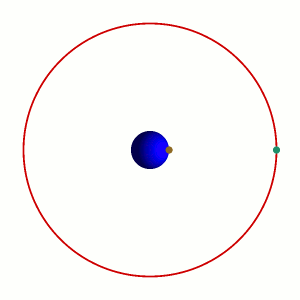
Geostationary orbit: NASA
High Earth Orbit, HEO
High Earth Orbits are over 36,000 km above earth.
At this height, they can monitor a large part of our planet’s surface.
Communications, navigation and scientific research satellites use HEOs.
Polar Orbit
A few satellites have orbits which take them over the Earth’s north and south poles.
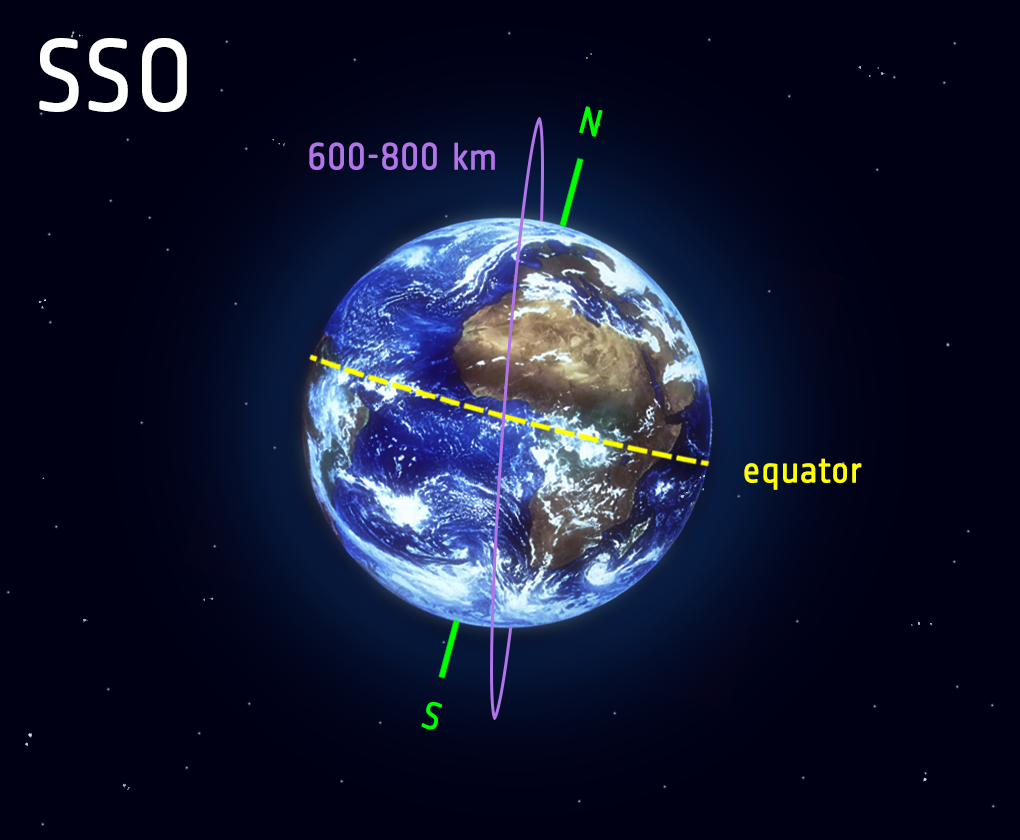
Polar orbit: ESA
Earth mapping satellites may use polar orbits.
They can photograph our planet as it spins on its axis beneath them.
Iridium communications satellites also use a polar orbit.
Orbit Speeds
Orbit speeds depend on the type of orbit.
The Earth’s gravitational pull increases the nearer a satellite is to the Earth.
Low Earth Orbit satellites must maintain a speed of 27,400 km / hour to keep in orbit.
If this speed drops, the satellite will be pulled closer to Earth’s surface and may eventually crash into it.
Geosynchronous satellites are further away and move at a lower speed.
Their orbital velocity is around 11,000 km / hour.
Forces on Satellites
This brings us neatly to consider how satellites stay in orbit.
We can look at the forces that act on satellites.
Two factors decide the type of orbit.
They are satellite speed and Earth’s gravitational pull.
Before we see how, let’s define some terms.
Speed describes how fast something is moving.
Speed = distance / time.
Velocity is the rate at which an object changes position in space.
Velocity = change of position / time.
Acceleration measures a change of velocity.
Acceleration = change of velocity / time
Forces and orbit

Satellite orbit: ESA
Our ESA diagram shows how forces decide a satellite orbit.
The speed forward is balanced by Earth’s gravitational pull.
The result is that the satellite stays at the same distance above Earth.
So the speed is the same, constant.
However the satellite is changing position all the time.
So it’s velocity changes all the time.
The satellite is accelerating in orbit but it’s speed remains the same.
Zero-G
We’ve all seen videos of astronauts and objects floating around in a space station.
It’s like there’s no gravity up there.
In fact astronauts often call it Zero-G.

International Space Station: NASA
Of course, there is gravity throughout space.
The Sun, planets and moons all have gravitational fields around them.
However, in orbit, the force of gravity is balanced by the space craft’s speed.
Objects inside the satellite are in free fall around Earth.
They float around, they are weightless.

The author: Dennis Ashton is a Fellow of the Royal Astronomical Society and a Wonderdome presenter.
Would you like to hear more Astronomy news?
Do you want to to find out about our upcoming public events?
Follow WonderDome Portable Planetarium on Twitter and Facebook or go to our web site wonderdome.co.uk

